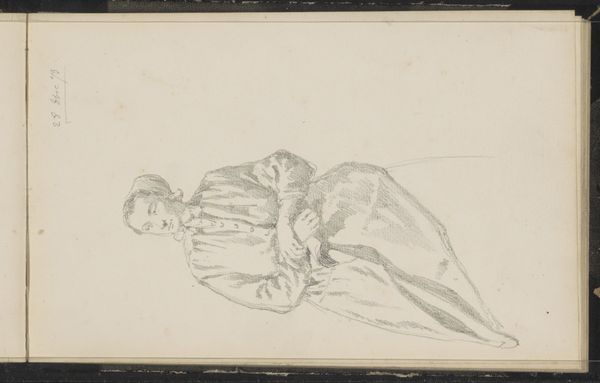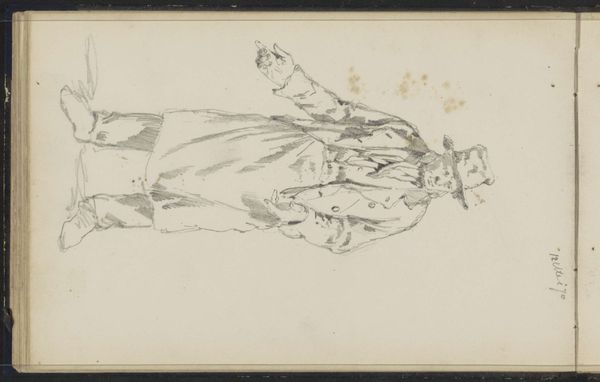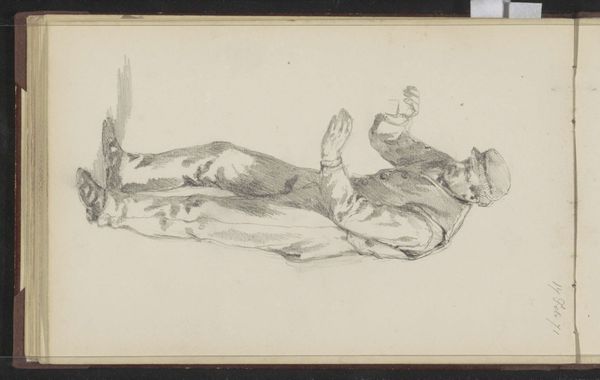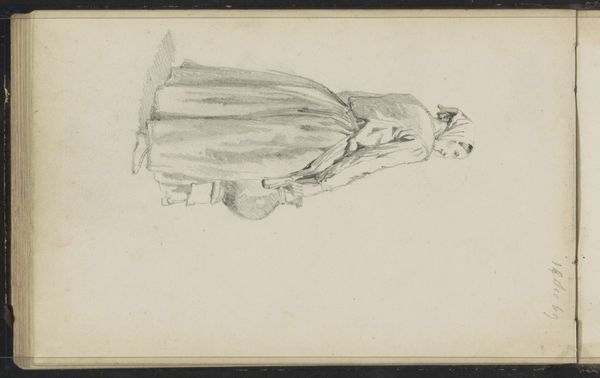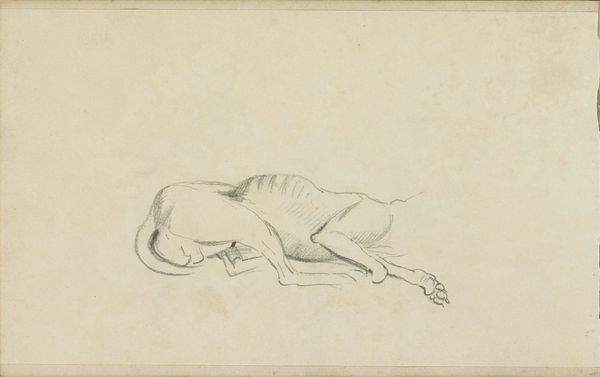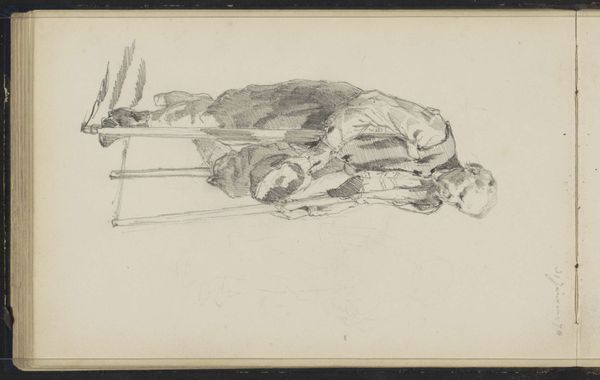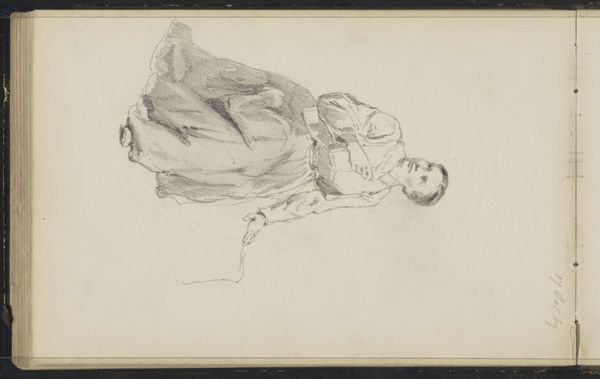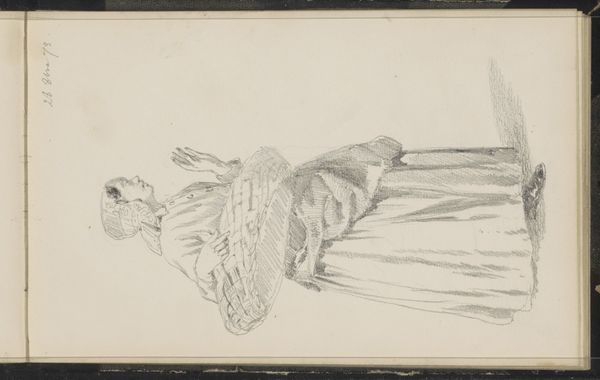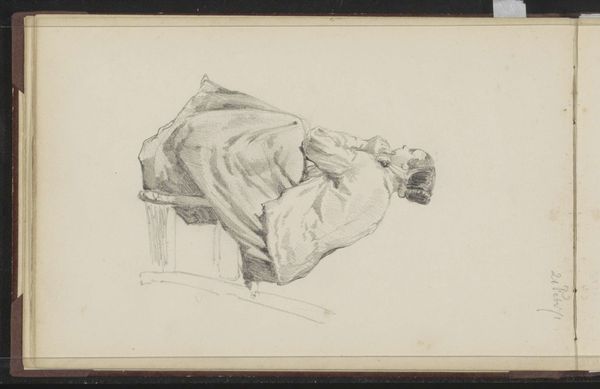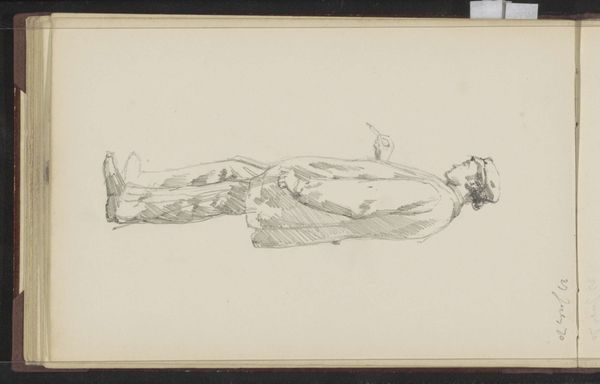
drawing, paper, pencil
#
portrait
#
drawing
#
toned paper
#
light pencil work
#
pen sketch
#
pencil sketch
#
paper
#
personal sketchbook
#
ink drawing experimentation
#
pen-ink sketch
#
pencil
#
sketchbook drawing
#
watercolour illustration
#
genre-painting
#
sketchbook art
#
realism
Copyright: Rijks Museum: Open Domain
Editor: This is "Jongen, op de rug gezien" – "Boy, seen from the back" – a pencil drawing by Cornelis Springer from around 1870, here at the Rijksmuseum. The immediate thing that strikes me is its incredible lightness, and how quickly it seems to have been executed, like a snapshot. What stands out to you, looking at the formal qualities of the work? Curator: Precisely that, the seemingly effortless capturing of form. Observe the economical use of line – how Springer defines the boy's figure with a confident brevity. Consider the varying pressure of the pencil, creating subtle tonal shifts that model the volume of the clothing and body. Note especially how the hatching suggests form and shadow with minimal means. Does the orientation strike you in any particular way? Editor: It's unusual, yes. He's lying horizontally in the frame, which emphasizes the horizontality of his pose and the recumbent nature of the drawing. Does that flattened perspective hint at anything in particular? Curator: It could, through its unusual arrangement, disrupt the usual verticality of a standing or seated portrait. How the artist has consciously constructed the image through the use of visual grammar and pictorial syntax is telling. Are there obvious contrasts here? Editor: The contrast of light and dark. Where his shirt bunches up, or under his chin, are where the heaviest marks are. Also the texture of the boy's hair gives darker marks on top of the smooth expanse of toned paper. Curator: Indeed. And consider how the composition directs the viewer's eye. Does the gaze linger anywhere? Editor: On the folds of the shirt and the roundness of his head. I see how the artist uses the absence of detail in certain areas to draw attention to others. I never really thought about sketches in that way, of using tonal variations like emphasizing phrases. Curator: Absolutely. It's in that intentional interplay of line, tone, and form that the expressive power resides. Every mark carries meaning. Editor: Thank you, that emphasis on visual structure helps me look past subject matter. Curator: You're welcome; concentrating on structure and form enhances our aesthetic experiences.
Comments
No comments
Be the first to comment and join the conversation on the ultimate creative platform.
